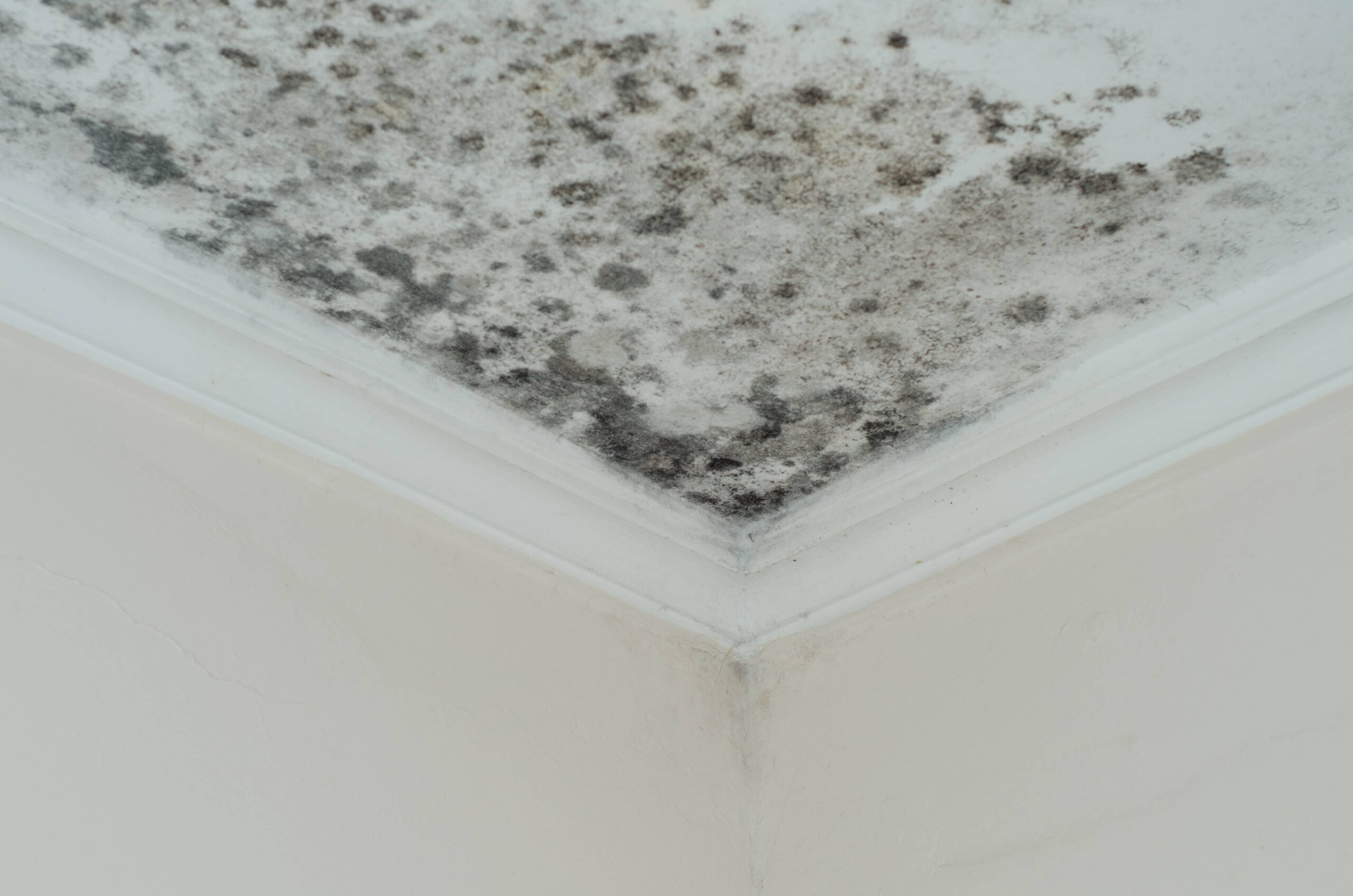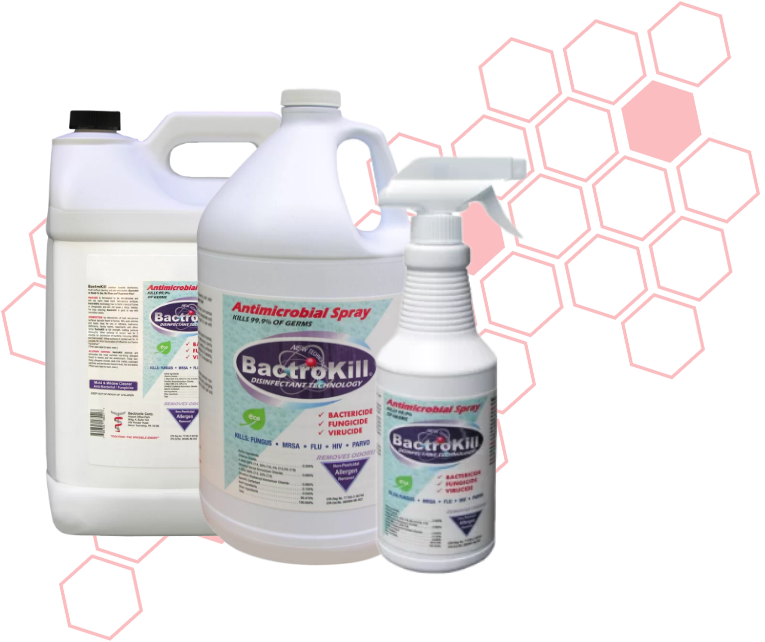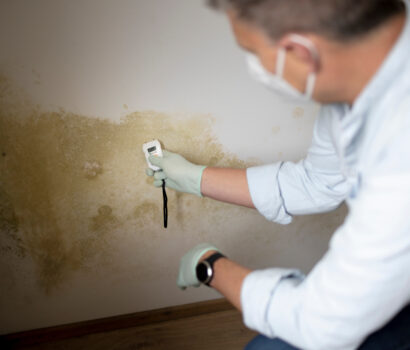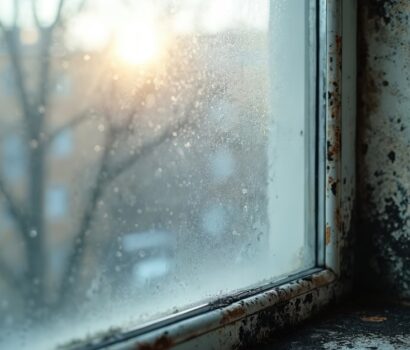Mold is a major-league nuisance. Not only does it discolor grout lines, drywall, siding, and even furniture, but it can also have a negative impact on your health. The growth of mold in any environment can cause damage to the structure of homes or buildings; this is due to the fact that mold eats away at organic materials. If left untreated, mold will continue to spread which could lead to costly repairs or replacements. Thankfully, in this blog, we cover some DIY remedies you can do to get rid of mold. Though, if the mold you encounter proves to be a determined adversary, we also cover when it’s time to call in a professional for remediation.
Techniques for Cleaning Surface Mold
If the affected area is smaller than about 10 square feet, the EPA says it’s safe to remove mold yourself using household cleaners. But don’t delay—the longer you wait, the higher chance the mold colony has of spreading and affecting your health. Don the proper protective clothing and get to work removing mold using any of these five cleaning methods:
- Dishwashing soap and warm water: Add about a teaspoon of dishwashing soap into a spray bottle, fill with warm water, and shake to combine. Spray the affected area and scrub with a soft-bristled brush. Dry thoroughly with a towel.
- Distilled white vinegar: Combine equal parts vinegar and warm water in a spray bottle. Mist the affected area and allow the solution to sit for one hour. Wipe with a damp cloth, followed by a dry towel.
- Borax: Combine one tablespoon of borax with one cup of water. Apply to the affected area with a soft-bristled brush. Scrub away the mold, but leave the borax solution on the affected surface. Aim a fan at the treated surface to help it dry more quickly.
- Detergent and diluted bleach: Mix 1 part detergent, 10 parts bleach, and 20 parts warm water. Apply to the affected area with a soft-bristled brush and scrub thoroughly. Allow the solution to air-dry.
- BactroKill: BactroKill is a RTU (Ready to Use) Hospital Grade, EPA registered disinfectant that has been tested and proven to kill mold safely and quickly. Spray the product on the mold affected surfaces, let it dwell for 10 minutes, and wipe dry with a towel.
Tips for Hindering Mold Regrowth
It takes more than a deep cleaning to remove mold. Yes, scrubbing with cleansers can remove the visible mold, but the spores can still regrow and spread quickly if the source of the problem isn’t fixed. The tips presented in this section will help you prevent your mold problem from resurfacing in the future.
- Fix plumbing leaks and other water problems as soon as possible. Place a dehumidifier in the area after, to ensure these areas stay dry.
- Mold can grow on or fill in the empty spaces and crevices of porous materials. This is why items such as ceiling tiles and carpet, may have to be thrown away if they become moldy.
- Do not paint or caulk over moldy surfaces. Instead, clean up the mold and dry the surfaces before painting. Paint applied over moldy surfaces is likely to peel.
- If you are unsure about how to clean an item, or if the item is expensive or of sentimental value, you may wish to consult a specialist. Specialists in furniture repair/restoration, carpet and rug cleaning, or water restoration are only a Google search away!
When to Call a Professional
Who should do the cleanup depends on a number of factors. One consideration is the size of the mold problem. If the moldy area is less than 10 square feet, in most cases, you can handle the job yourself. However you shouldn’t hesitate to call the professionals if:
- There has been a lot of water damage, and/or mold growth covers more than 10 square feet.
- You suspect that the heating/ventilation/air conditioning (HVAC) system may be contaminated with mold. In the meantime, do not run the HVAC system if you know or suspect that it is contaminated with mold – it could spread mold throughout the home or building.
- The water and/or mold damage was caused by sewage or other contaminated water.
- You or others have health concerns that the mold could trigger.
Schedule your Mold Remediation Services Today!
As an expert at creating and maintaining healthy living environments, Bactronix is your go-to source for mold remediation in Pittsburgh. We can test for mold after water damage, as well as treat and remediate any problems we find. Once the job is complete, we certify and guarantee the health of your home for one year! For more information or to request a mold remediation quote, please call 412-375-7886 or contact us online.





